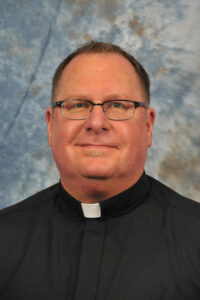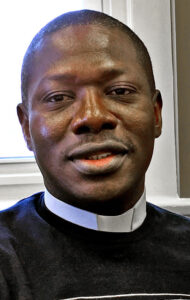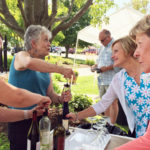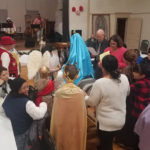By Anne Marie Amacher
The Catholic Messenger
Several parishioners of St. Paul the Apostle Parish in Davenport asked their pastor, Father Bruce DeRammelaere, about doing a Holy Thursday pilgrimage called the Seven Churches Visitation. He tucked away the idea before suggesting it at a recent Davenport Deanery meeting of priests. Would they be willing to have their churches open until midnight on Holy Thursday?

“The priests were in unison,” he said, about having their parishes participate in the pilgrimage. The origin of the Seven Churches Visitation is typically credited to St. Philip Neri and practiced by Catholics around the world, including in Poland, Mexico, Italy and the Philippines, Father DeRammelaere said.
Holy Thursday marks the end of Lent and the beginning of the Triduum. Tradition holds that Neri would lead groups of the faithful to visit each of the seven basilicas of Rome on Holy Thursday night to keep watch with Christ, as though they were in Garden of Gethsemane before his passion. Each visit calls on participants to reflect on the seven places of Jesus’ passion from his arrest on Holy Thursday to his death on Good Friday.
An article in Today’s Catholic of the Fort Wayne-South Bend Diocese shares this explanation, as reported by Stephanie Patka Mahoney: “At the end of the Holy Thursday Mass, the Eucharist is placed on a temporary ‘altar of repose’ away from the sanctuary. It is customary for the faithful to process together to this altar and spend time in quiet prayer and adoration. In the Roman Missal, it states: ‘The faithful are invited to continue adoration before the Blessed Sacrament for a suitable length of time during the night, according to circumstance.’”
The article states that the seven visits reflect Jesus:
- In the Garden of Gethsemane (Luke 22: 39-46).
- Bound and taken before Annas (John 18: 19-22).
- Taken to the High Priest, Caiaphas (Matthew 26: 63-65).
- Taken to Pilate (John 18: 35-37).
- Taken to Herod (Luke 23: 8-9; 11).
- Taken again to Pilate (Matthew 27: 22-26).
- Given the crown of thorns and led to his crucifixion (Matthew 27: 27-31).
When pilgrims enter each of the seven Davenport Deanery churches (see box), a worship aid will be available with Scripture and other helpful ideas for visiting the altar of repose, Father DeRammelaere said. Some of the altars of repose will not be in the church building or its main altar. At St. Paul the Apostle, for example, the altar of repose will be in Denning Hall.
Upon entering each church, pilgrims visit the altar of repose, kneel, make the sign of the cross, read the appropriate Scripture for each station and engage in private prayer and adoration. The visits to the seven parishes are in no particular order, Father DeRammelaere said. Catholics may want to team up and ride together, he added. Participants may pray the rosary or another prayer traveling between the churches.
Many parishes outside the Davenport area will be open on Holy Thursday into the later evening. Catholics in those areas could drive to a few of the churches and pray a certain number of stations at each one. Families with small children may want to visit just one or two parishes and double up on the prayers at each.

Father Nicholas Akindele, pastor of Holy Family and St. Alphonsus parishes in Davenport, called this devotion an inspiring event. “This is a time to receive extra graces and blessings for the Lord.” He encourages Catholics to participate.
“This is an opportunity to help grow in your faith and prayer life,” Father DeRammelaere said, and an opportunity to unite people from different parishes.
These seven churches will be open on Holy Thursday until midnight.
• St. John Vianney, 4097 18th St., Bettendorf
• Our Lady of Lourdes, 1506 Brown St., Bettendorf
• Holy Family, 1923 Fillmore St., Davenport
• Our Lady of Victory, 4105 N. Division St., Davenport
• Sacred Heart Cathedral, 422 East 10th Street, Davenport
• St. Anthony, 417 North Main St., Davenport
• St. Paul the Apostle, 916 E. Rusholme, Davenport











